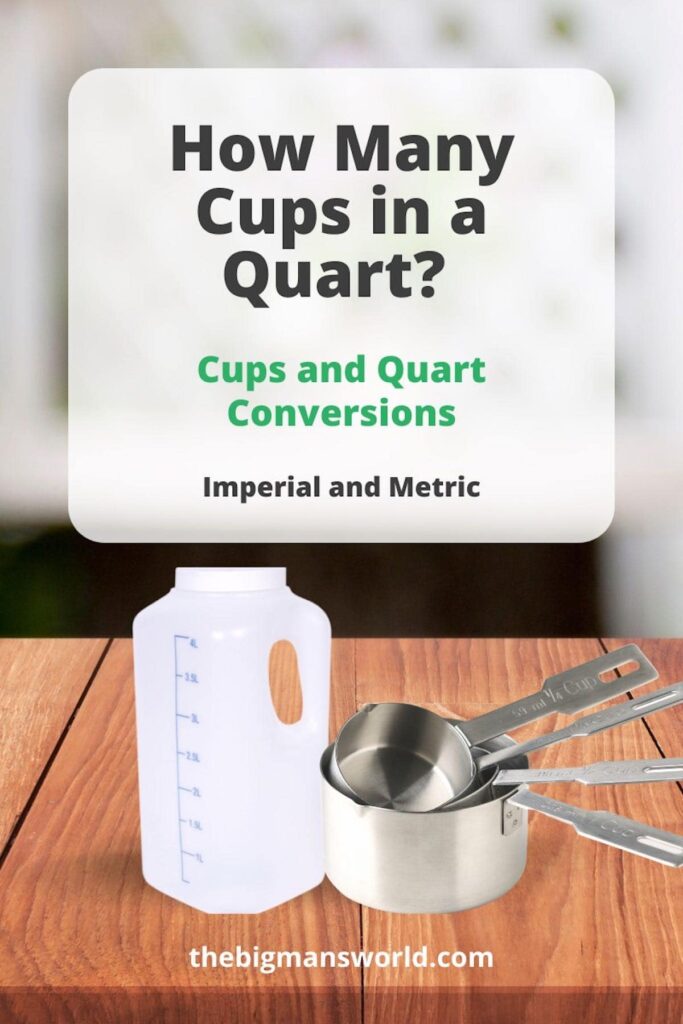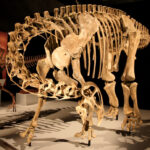Demystifying Measurements: How Many Cups in a Quart?
Ever stared at a recipe calling for a specific amount of liquid in cups, only to have a gallon jug of the ingredient mocking you from the pantry? Or perhaps you’re mixing a cleaning solution and need to convert gallons to cups for precise dilution. Fear not, for this comprehensive guide will unveil the conversion mystery and equip you with the knowledge to confidently navigate between ounces, cups, quarts, and gallons.
Understanding Units of Volume: Cups vs. Quarts
Our journey begins by understanding the fundamental units we’re dealing with: cups and quarts. Both are used to measure volume, which refers to the three-dimensional space occupied by matter.
-
Cup (cup): A relatively small unit commonly used for measuring smaller quantities of liquids and dry ingredients. In the United States, there are two main types of cups:
- Dry Cup (cup): Primarily used for dry ingredients like flour, sugar, or grains, it holds approximately 240 milliliters (mL).
- Liquid Cup (fl oz): Specifically used for liquids, it represents the volume of 8 fluid ounces (fl oz) and is equivalent to approximately 236.5 mL. This is the standard cup measurement used in cooking and baking.
-
Quart (qt): A larger unit typically used for measuring substantial volumes of liquids. Similar to cups, there are two primary types of quarts:
- US Liquid Quart (US qt): The standard quart used in the United States, it holds 4 liquid cups or 32 fluid ounces (fl oz). This is the type of quart referred to in most recipes and household measurements.
- Imperial Quart (imp qt): Used in the United Kingdom and some Commonwealth countries, it’s slightly larger than a US quart (about 40 fluid ounces).
Important Note: Throughout this article, we’ll focus on US liquid cups (fl oz) and US liquid quarts (US qt) unless otherwise specified.
The Conversion Formula: Unveiling the Magic Number
Now that we’ve established the players, let’s unlock the secret to converting between them. The conversion formula is refreshingly simple:
Number of Cups (fl oz) = Number of Quarts (US qt) × 4
This formula essentially multiplies the number of quarts by 4, which represents the number of liquid cups in a US liquid quart.
Conversion Examples: Putting the Formula into Action
Let’s solidify our understanding with some practical examples:
-
Converting Quarts to Cups:
- You have a 2-quart jug of orange juice and need 1 cup (fl oz) for a recipe. How much juice do you need to measure?
- Apply the formula: Number of Cups (fl oz) = 2 quarts × 4 fl oz/quart = 8 fl oz
- Therefore, you have 8 fluid ounces of juice, but the recipe only calls for 1 cup (fl oz). So, simply measure out 1 cup from the 2-quart jug.
- You have a 2-quart jug of orange juice and need 1 cup (fl oz) for a recipe. How much juice do you need to measure?
-
Converting Cups to Quarts:
- A cleaning solution recipe requires 48 fluid ounces. You only have a container that holds 2 quarts (8 cups). How many quarts of solution will you need to make?
- Divide the total ounces by the number of ounces per quart: Number of Quarts (US qt) = 48 fl oz / 32 fl oz/quart = 1.5 quarts
- You’ll need to make 1.5 quarts of the cleaning solution.
- A cleaning solution recipe requires 48 fluid ounces. You only have a container that holds 2 quarts (8 cups). How many quarts of solution will you need to make?
Beyond the Basics: Additional Considerations
While the core conversion formula is straightforward, a few additional points deserve mention:
-
Rounding: In real-world scenarios, you might encounter measurements that don’t translate perfectly into whole numbers. It’s generally acceptable to round to the nearest appropriate unit depending on the application. For example, if a recipe calls for 1.25 quarts, you can likely measure out 1 quart and 1 cup (16 fluid ounces) without significantly impacting the outcome.
-
Density: The conversion formula assumes we’re dealing with liquids with a density close to water. For significantly denser or lighter liquids, slight variations might occur. However, for most common household applications, the standard conversion will suffice.
-
International Considerations: As mentioned earlier, the US uses the US liquid quart (32 fl oz). If you’re working with recipes or measurements from other countries, you might encounter imperial quarts (40 fl oz). Double-check the type of quart being used to ensure accurate conversions.
Applications of Converting Between Cups and Quarts
Understanding ounce-to-gallon conversions comes in handy in various situations:
- Cooking and Baking: Recipes often specify ingredients in cups.
FAQ About Cups and Quarts
This section addresses common questions that might arise regarding cup and quart conversions:
1. How many milliliters are in a cup?
There are two main types of cups to consider:
- Liquid Cup (fl oz): This holds approximately 236.5 milliliters (mL).
- Dry Cup (cup): This holds approximately 240 milliliters (mL).
2. How many ounces are in a quart?
A US liquid quart (US qt) holds 32 fluid ounces (fl oz).
3. How many pints are in a quart?
There are two pints in a US liquid quart (US qt).
4. What if I don’t have a measuring cup with cup markings?
No worries! You can improvise using readily available household items. Here’s a quick conversion guide:
- 1 tablespoon (Tbsp) = 3 teaspoons (tsp) ≈ 1.5 fluid ounces
- 1 quarter cup = 4 tablespoons ≈ 2 fluid ounces
- 1 liter = approximately 4.2 cups (fl oz)
5. Are there online conversion tools available?
Absolutely! There are numerous online conversion calculators that can handle unit conversions between cups, quarts, ounces, liters, gallons, and other volume units. These tools can be handy for quick conversions without memorizing formulas.
6. How can I estimate the volume of an irregular container?
For irregularly shaped containers, like a juice box, you can estimate the volume by filling it with water and then pouring the water into a measuring cup with cup markings. This method provides an approximate measurement.
Beyond Conversion: Tips for Mastering Measurements
- Invest in a good quality measuring set: Having a set of measuring cups and spoons with clear markings in both cups and ounces can significantly improve your measurement accuracy in the kitchen.
- Label your containers: If you frequently store liquids in containers other than their original packaging, consider labeling them with the volume they hold in cups or quarts. This saves time and prevents confusion.
- Practice makes perfect: The more you convert between cups and quarts, the more comfortable you’ll become with the process. Don’t hesitate to experiment with practice conversions to solidify your understanding.
By understanding the relationship between cups and quarts, along with the valuable tips provided, you’ll be well-equipped to tackle any recipe or measurement challenge with confidence. No more staring at a gallon jug wondering how many cups it holds! Now, get out there and experiment with your newfound knowledge!



